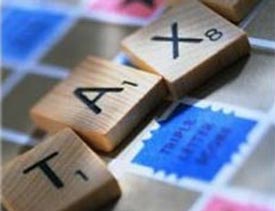
Tax is probably the most hated three letter word in the entire world. It seems that not a year goes by without the government inflicting us with more taxes, and taking more of our money: “VAT blah, 50 percent threshold blah.”
However, as much as we bemoan them, we know that taxes on things such as income and sales are, depending on where you live, pretty much an inescapable part of life. Some places may have higher taxes than others, and some places may have more taxes, but generally some form of taxation is a necessity for the world to function.
That cannot be said of all taxes though, throughout time there have been some strange, odd and downright bizarre taxes, some of which we shall look at.
Windows
A famous tax from days of yore was the Window Tax in the UK, which was introduced in 1696 by King William III. In those days windows were seen as a measure of wealth, the more windows you had in your home the richer you were, and since income tax was yet to be accepted the government saw a window of tax opportunity, literally.
Window tax created interesting social occurrences, households who sought to establish themselves as elite members of society would have as many windows as possible, in some cases even having windows built over structural walls, and of course poorer households would in turn board up windows in a bid to escape taxation.
Window tax kept going until it was finally repealed in 1851, up to then it was said to earn the government £1,832,684 a year.
Candles
Candles were once another odd item that imposed taxes, from the years of 1709 and 1831 people were not allowed to make candles unless they paid the necessary taxes and were granted a license. Once the tax was repealed people took to making candles like never before, resulting in the myriad of styles that fill homes today.
Hats
Another funny tax was that of hats, which went on from 1784 to 1811, in another way to extract money from the rich. Similarly to windows the reasoning of then Prime Minister, Pitt the Younger, was that the richer the person the more hats they would have. All hats then had a revenue stamp attached to the lining, with the cost of the duty depending on the cost of the stamp. Hat tax was taken very seriously and people who were found to forge hat tax revenue stamps faced death!
Bricks
This last ridiculous tax item was also in the 18th century, with the government attempting to gain funds through the construction industry. The rate was five shillings per every thousand bricks used by builders, so what did the builders do? The used bigger bricks of course! However this canny move was later negated by higher taxes for bigger bricks, until the tax was ended in 1850

